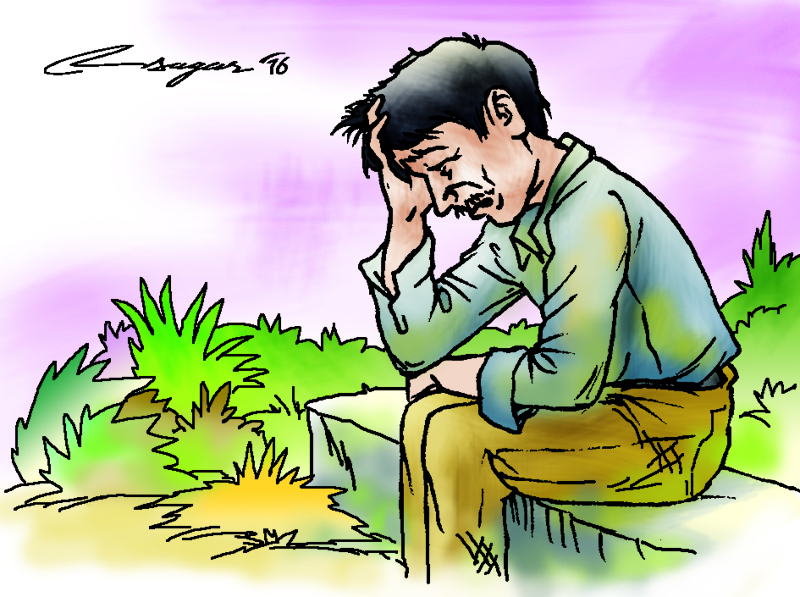Mental health: Pause and think
The provision of minimal mental health services in all general health services in community setting would not just provide timely treatment for people with mental illness, but would also have a huge role in reducing stigma
Vocabulary is an important aspect of our being. It helps categorize the continuous so the abstract (also called feelings) can be organized in some structured form (giving rise to opinions).
So it stands to reason that lack of appropriate vocabulary can inhibit one’s grasp of a concept. This phenomenon is nowhere more evident than in the mental health sector in Nepal.
If your first reaction to hearing this is that of opposition or mild discomfort – it is a sensitive topic after all – think about how you, personally, would refer to someone who is suffering from depression [in Nepali of course].
What about other extremely frequent conditions like anxiety disorders, ADHD, PTSD, and personality disorders? Chances are you are probably not the only one struggling to denominate and, consequently, understand these conditions.
Our legal documents still refer to people with mental conditions or disabilities with derogatory terms like “paagal” [literal-mad], “baulaha” [again, mad], “lato” [literal- dumb], “magaj bigreko” [literal- one with brain dysfunction].
The Muluki Ain of 1963 (which shapes much of our legal discourse), states that as treatment, people with psychosocial disabilities can be put into prison or behind cages in hospitals with a fetter, and that they can only be released upon request of whoever is in charge of their custody.
There are two major problems here. One - by claiming to be mad we are disrespecting people who are fighting personal battles against mental conditions.
Two - our consciousness, vocabulary, and infrastructure are woefully unevolved to ensure a safe space for such individuals.
Our aim in this article is to reflect on where we stand, as a collective, in terms of providing a life of dignity for our fellow countrymen who live with mental conditions.
After reading this, perhaps, next time you hash-tag IamPaagal, you will at least pause to think of all the people who live that life every day in your country.
Although sound epidemiological studies on mental illness are virtually non-existent in Nepal, the few that have been done paint an extremely grim picture. One study estimated that at least 35% of the population demonstrated conspicuous psychiatric morbidity.
Today, there are exactly 440 in-patient beds designated for patients with mental illnesses throughout the whole country. These beds, like most things in our country, are concentrated in major cities.
This kind of planning would seem to suggest that rural areas don’t have any patients with mental illnesses - a far cry from any plausible reality. With improvement in awareness and education, things have changed a bit in urban areas, but in the rural areas, mentally ill patients and their families have a hard time outliving stigma, discrimination and abuse - all of which serves to strip them of their dignity.
Such individuals are deprived of the right to make their own decisions regarding matters of treatment, personal and financial affairs, etc. by default, which deprives them of their fundamental human rights.
The prevalent stigma also prevents individuals with mental illnesses from access to education and employment opportunities. All this is not to say that nothing has been done.
There have been efforts, albeit perfunctory, to address the issue of access to mental health care and preservation of dignity for individuals with mental conditions in Nepal.
Mental Health Policy - MHP (1996) and Mental Health Treatment and Protection Act - MHTPA (2006), are the cornerstone laws aimed at providing some legal relief. Policy 3 in the MHP - considered a very progressive legislature - is dedicated to the protection of fundamental human rights of mentally ill patients.
In 2006, a final draft of the MHTPA was submitted to the government but has not yet been endorsed by the parliament. The act was drafted to rehabilitate people with mental disorders in the society by providing timely care and safeguarding fundamental rights of people with mental disorders.
Today, while we are fighting for the rights of all marginalized groups, the time is right to raise the concerns of another largely overlooked segment of our population.
The right for patients of mental illnesses to make their own decisions about treatments should be unalienable. So should be their rights against discrimination in sectors of education and employment.
Major strategies for awareness need to be devised not just in the health care system but also in the community.
The provision of minimal mental health services in all general health services in community setting would not just provide timely treatment for people with mental illness, but would also have a huge role in reducing stigma and discrimination in the name of mental illness.
At the community level, encouraging participation in community life and acknowledging value of their contribution can be game-changing.
At an institutional level, the MHTPA 2006 needs to be officially enacted in legislature to begin the process of safeguarding the fundamental rights of people with mental disorders in Nepal.
It is high time we recognized, as a nation, and in contexts extending beyond the scope of this article, that equality is not always the same as justice.
Ballav is a Consultant Psychiatrist at Department of Psychiatry and Mental Health, TU TeachingHospital, Maharajgunj and Giri is a PhD and works as a data scientist in the health sector in the USA






